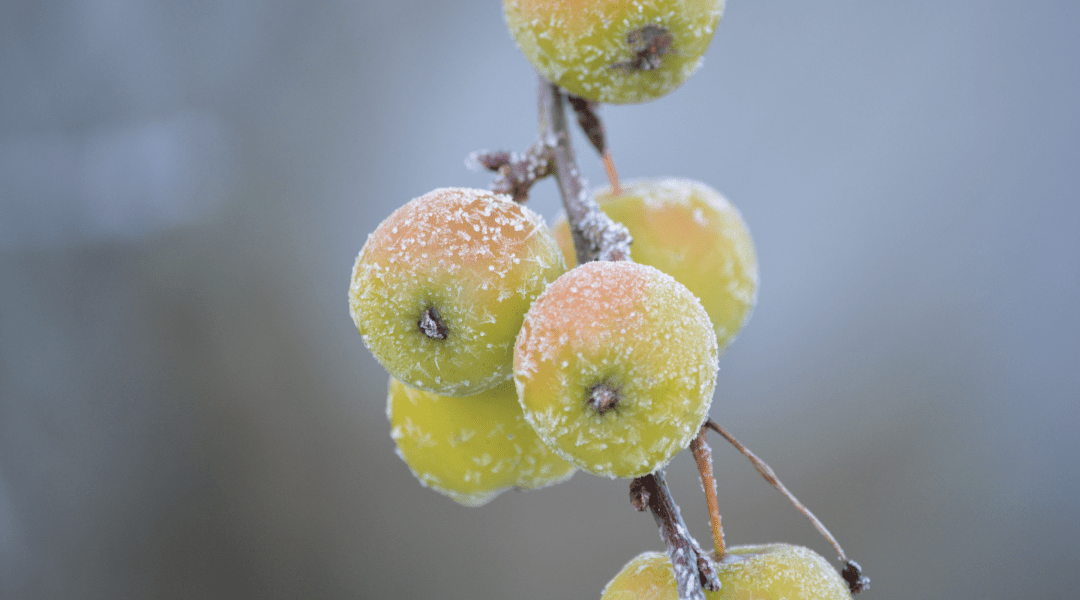When plants are exposed to stress conditions (cold, heat, drought, salinity stress, etc.) it results in the formation of reactive oxygen species (ROS). These are the same as free radicals which are a concern in human health. Reactive oxygen species damage or even kill plant cells and are a major contributor to reduced yields under stress conditions. Just as many people eat foods rich in anti-oxidants to help combat the negative effects of free radicals, plants are able to produce their own anti-oxidants in response to stress conditions. These anti-oxidants help neutralise the negative effects of ROS, allowing the plant to grow better under stress conditions.
Various approaches can be used to help plants cope better with environmental stresses such as cold stress. These include
- Indirect improvements to overall plant vitality – any measure that will contribute to the overall health of the plant will have an indirect effect on the plants ability to produce its own anti-oxidants and better cope with stress. This includes a well-balanced root health program, optimal irrigation scheduling, optimal plant nutrition, etc.
- Application of anti-oxidant containing products – Applications of foliar fertilisers or biostimulants containing anti-oxidant ingredients such as Vitamins, alginic acid and mannitol (mostly from kelp) and polyphenols (from sources like fulvic acid). These applied anti-oxidants can supplement those produced by the plant and result in improved stress tolerance.
- Silicon – A number of recent studies have shown that the application of Silicon fertiliser increases the plants’ ability to produce anti-oxidants, inactivating harmful ROS and reducing yield losses associated with various stresses including cold stress. In addition to this, plants are also able to deposit silicon below the cell walls, increasing cell wall strength and reducing the risk of cells collapsing or bursting as a result of stress conditions.
Based on the above, Madumbi has a 3 step program to help reduce the negative effects of cold stress as we move into the winter months.
- Root health program – A plants overall health and vitality begins with the roots. A healthy soil environment and root system results in a stronger plant better able to cope with a wide range of stresses (both environmental and pests and disease). Madumbi’s standard Root Health Program includes the use of beneficial fungi and bacteria (Trichoderma and Bacillus based products) in the form of Eco-T and RhizoVital. These are supplemented with the addition of V12 Initiate which contains good levels of slow release silicon together with other macro and micronutrients as well as fulvic acid and kelp. In annual crops a root health program can be started from planting while in tree crops it should be implemented throughout the year with the main focus being from spring through to autumn and targeting the crops main root flushes.
- V12 Multi – V12 Multi can be described as a general plant tonic and foliar fertiliser. It contains most essential macro and micronutrients together with a wide range of organic base ingredients such as kelp, amino and fulvic acid together with some added vitamins (C and E). Rich in anti-oxidants, regular applications of V12 Multi provides a great solution for any crop dealing with stress conditions. V12 Multi can be applied routinely to build plant vitality and overall stress tolerance or it can be applied after stress events to boost recovery and regrowth (e.g. after frost or hail damage).
- AgriSil K50 – Providing both direct protection through silicon based cell strengthening, as well as indirect protection through enhancing the plants ability to produce its own anti-oxidants, AgriSil K50 is a must in any anti-stress program. AgriSil K50 is generally best applied through the soil via irrigation. However, a foliar application immediately before an expected cold spell can provide an increased level of protection. Silicon levels need to be raised in the plant before the onset of the cold stress i.e. silicon works preventatively and should preferably be applied at least 1 week before the onset of stress conditions in row crops. In tree crops it is best to apply 2-3 applications of silicon at 2-4 week intervals before entering a stress risk period.
There is a difference between cold stress tolerance and freezing tolerance. While silicon can help protect plants against mild frost it is unrealistic to expect it to prevent damage under severe frost conditions.
Table 1 – guideline for annual crops e.g. vegetables
| Product | At planting | 2 weeks post emergence/transplant | 4 weeks | 6 weeks | 8 weeks | 10 weeks |
| V12 Initiate | 3-5kg/ha | |||||
| Eco-T | 250-500g/ha | |||||
| RhizoVital | 250-500ml/ha | |||||
| V12 Multi | 3-5L/ha | 3-5L/ha | ||||
| AgriSil K50 | 1-2L/ha | 1-2L/ha | 1-2L/ha | 1-2L/ha | 1-2L/ha |
Table 2 – guideline for tree crops
| Product | Spring/Summer | May (Late Autumn) | June | July | August |
| V12Initiate | Root health program should start in spring and target root flushes | ||||
| Eco-T | 500g/ha (soil) | ||||
| RhizoVital | |||||
| V12 Multi | 5L/ha (foliar) | 5L/ha (foliar) | |||
| AgriSil K50 | 5L/ha (soil) | 5L/ha | 5L/ha | 5L/ha |
* Additional AgriSil K50 foliar applications at 5L/ha can be made just prior to specific stress events e.g. anticipated cold fronts
**Additional V12 Multi applications can be made post-stress to encourage new growth
Written by Dr Brendon Neumann

